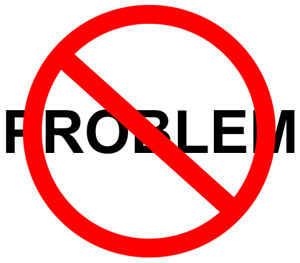
Problem-Free, Idea-Free Creative Thinking
Think in an Anticonventional Way: Stop Searching for the “Idea” and the “Problem” as the Backbones of Team Creative Thinking
By Fernando Cardoso de Sousa
President of the Portuguese Association for Creativity and Innovation - APGICO
As we know, almost all definitions of creativity stress the need for the “idea”, which must be considered original and valuable. As strong as these definitions is the statement that, when we talk about the process of creative thinking, we talk about defining the problem as the most important aspect. Here, we also see the importance of divergent thinking, even though it may be associated with a convergent phase. And when we talk about innovation, we learn that it means putting an idea in use. These are the main postulates that rule all creative methods of individual and team creative work, as well as creativity and innovation in organizations.
What would happen if we challenge these concepts a bit, and come up with other assumptions?
First, think about creativity simply as a motivated attempt to do something better than what is done now. By doing so, you stop worrying about the “idea” and even about the “problem”. Then, there is no need to separate divergent from convergent thinking. You just think, creatively or not, until you find something that pleases you. And, as you want that thing to be valuable for other people, you have to find some use for it and to communicate your findings, so that other people will know that you came up with something interesting. If you succeed, people will say that you have been creative and have brought about an innovation, even though it might happen only a hundred years later.
Now let us adapt this to team work.
First you need a problem. Consider this: if someone asked you to facilitate a team meeting, that person must have an idea about the purpose of the meeting. So, you can label this purpose as the problem. Your client did not ask you to make the team a creative one. Rather they want you to help them fulfill a certain objective (purpose). As a result, you do not need to search for the problem. Moreover, if you do not search for a problem there is no reason to search for an idea to solve it.
Nevertheless, let us be flexible. As you know, it is not easy to bring a member of a heterogeneous team to agree on the same purpose, accept other views on the same issue and resume long analyses in a simple sentence. So, just to discipline the team, you ask the members for obstacles they think that can be found while trying to attain the objective. When you have a sizable list, you ask each member to choose the obstacle they find the most important, and you give her the opportunity to justify the choice. When the last justification is made, take two to four obstacles out of the list and, add the sentence “What are the steps needed to…? (see "What if you change IWWMI into WASNT" ), and ask the client to choose one and justify it. That is it! In no more than one hour you have turned the group into a cohesive team, given it enough training on creative thinking, and provided the client (should be the boss) with an opportunity to be seen as a true creative leader by the team.
After the break, it is time to work: ask the team to designate the tasks (steps) that are needed in order to solve the problem (company people prefer to address it as a challenge). Once you have all of the tasks in sequence, ask for suggestions on how to execute each one. Then ask for volunteers and establish sub-teams for each task. Use some more strategies to finish the action plan, in no more than two hours, otherwise the team will be too exhausted to think.
There you have it: you had individuals giving contributions in order to make things better, accepted by the team as original and valuable, meaning everybody saw the aim an innovation but did not pursue innovation per se. Moreover, you did not have to worry about ideas, problems, divergent or convergent thinking; only about putting a lot of ideas in use in order to solve a problem.
Did the participants become creative in a couple of hours? The answer is both yes and no. No, because all of them are creative at some point in their field of expertise, otherwise they would not have been chosen as team members, and you cannot turn them more creative on the spot. Yes, because they learnt to accept each other’s views and felt pleased to reach a consensus. They are now more prepared than before to develop their creativity during the implementation of the project, during which they will learn more, interact more, define more problems and come up with more ideas.
It was a short session, so do not worry too much about its creativity level. What you must worry is about the implementation of the project but that will be a good topic for a next text.
Moral of the story: Do not forget to challenge your learning in an anti-conventional way, like Jeffrey suggests, from time to time.




